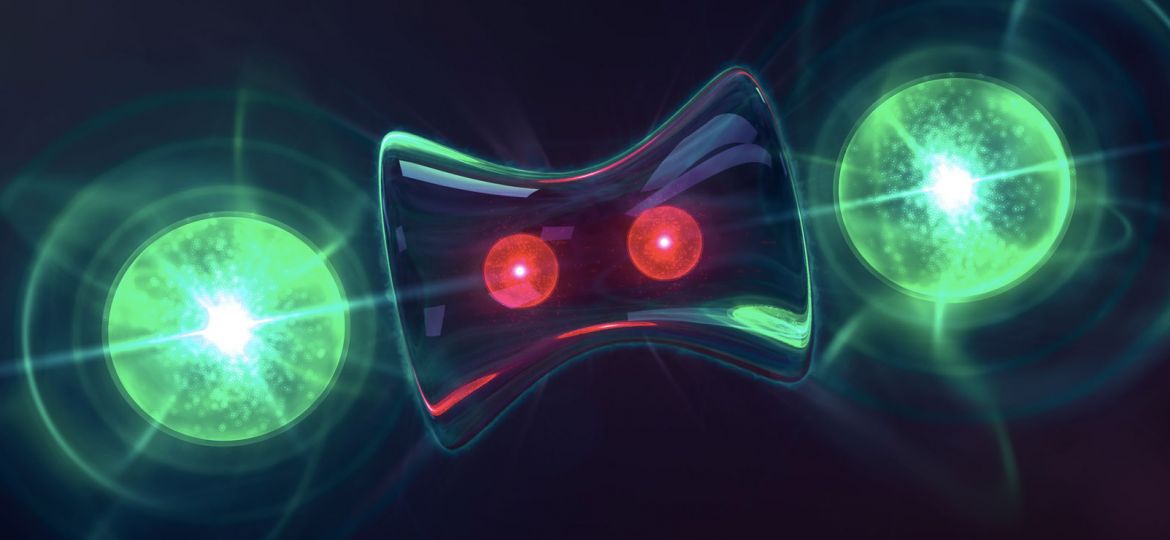
WHY THIS MATTERS IN BRIEF
- The more Qubits a quantum computer can run the more powerful it becomes, this breakthrough could give researchers a new way to create ultra powerful, highly scalable systems in an affordable, simple way
Physicists from the University of Sussex, a member of the UK’s Quantum Information Technologies Hub (NQIT) have developed a ground breaking new technique that makes it much simpler to build large scale trapped ion quantum computers, bringing us one big step closer to making quantum computers a reality in the near future.
Although quantum computers – with the exception of DWave, who it can be argued don’t build “real” quantum computers – are merely a concept, numerous computer science researchers around the world and billions of dollars have been invested to create them.
Currently researchers around the world are building quantum computer systems either using trapped ions and atoms, particles of light, or superconducting circuits that act as qubits.
The current method of creating a quantum computer that makes use of trapped ions involves using laser beams to build quantum gates – this is fine if you’re building a small quantum computer that consists of only a few qubits. But, if you want to create a true quantum computer capable of computing a huge equation then you’ll need a quantum computer that consist of hundreds of thousands of qubits, which, in turn, will require hundreds of thousands of laser beams that can all be accurately aligned to within a 5μm radius in order to build all the requisite quantum gates.
Funnily enough, and as you might have guessed, this is incredibly hard to do but now University of Sussex researchers have developed a method that will greatly simplify building trapped ion quantum computers. Instead of using laser beams, they invented a method where voltages are applied to a microchip in order to build quantum gates.
“We’ve reduced the difficulty of building a quantum computer to the equivalent of building a classical computer. In a classical computer you have transistors and they apply voltage to execute a classical logic gate,” says Winfried Hensinger, professor of quantum technologies at the University of Sussex’s Ion Quantum Technology Group.
“We use microwave radiation, bathe the entire quantum computer in microwaves, then we have local magnetic field gradients within the actual processing zones, and by applying a voltage, we shift the position of the ion so it either interacts with the global microwaves or not.”
The research, entitled “Trapped-Ion Quantum Logic with Global Radiation Fields” is published in the journal Physical Review Letters.
To build a quantum gate you need to be able to entangle two qubits and if you wanted to build a quantum gate you would need the trapped ions to stay resonant. But if you just wanted one qubit on its own, then you would want the option to be able to shift the position of the ion so that it doesn’t interact with the global microwave field, and this is what the scientists have been able to achieve.
The researchers eventual aim is to build two large scale quantum computing demonstrators – one at the University of Oxford and one at Sussex.
So far, in research done on both superconducting qubit and trapped ion quantum computers, the maximum number of qubits achieved by scientists is about 10 qubits. In contrast, the current quantum computer built by the University of Sussex researchers in their laboratory has two qubits, but the next demonstrator, which should come online in the next few years, will have tens of qubits.
“Using this technique we can drastically reduce the complexity of engineering a large-scale machine. For the first time, you can carry out quantum gates on a trapped ion quantum computer just using voltages,” said Hensinger, who personally believes that trapped ions will win the quantum computing race much faster than superconducting circuits.
“This entirely changes how you would build a trapped ion quantum computer, it’s like going from a feature phone to a smartphone. The key advantage is the ability to engineer a machine with billions and billions of quantum bits, that’s now feasible with current technology.”
















